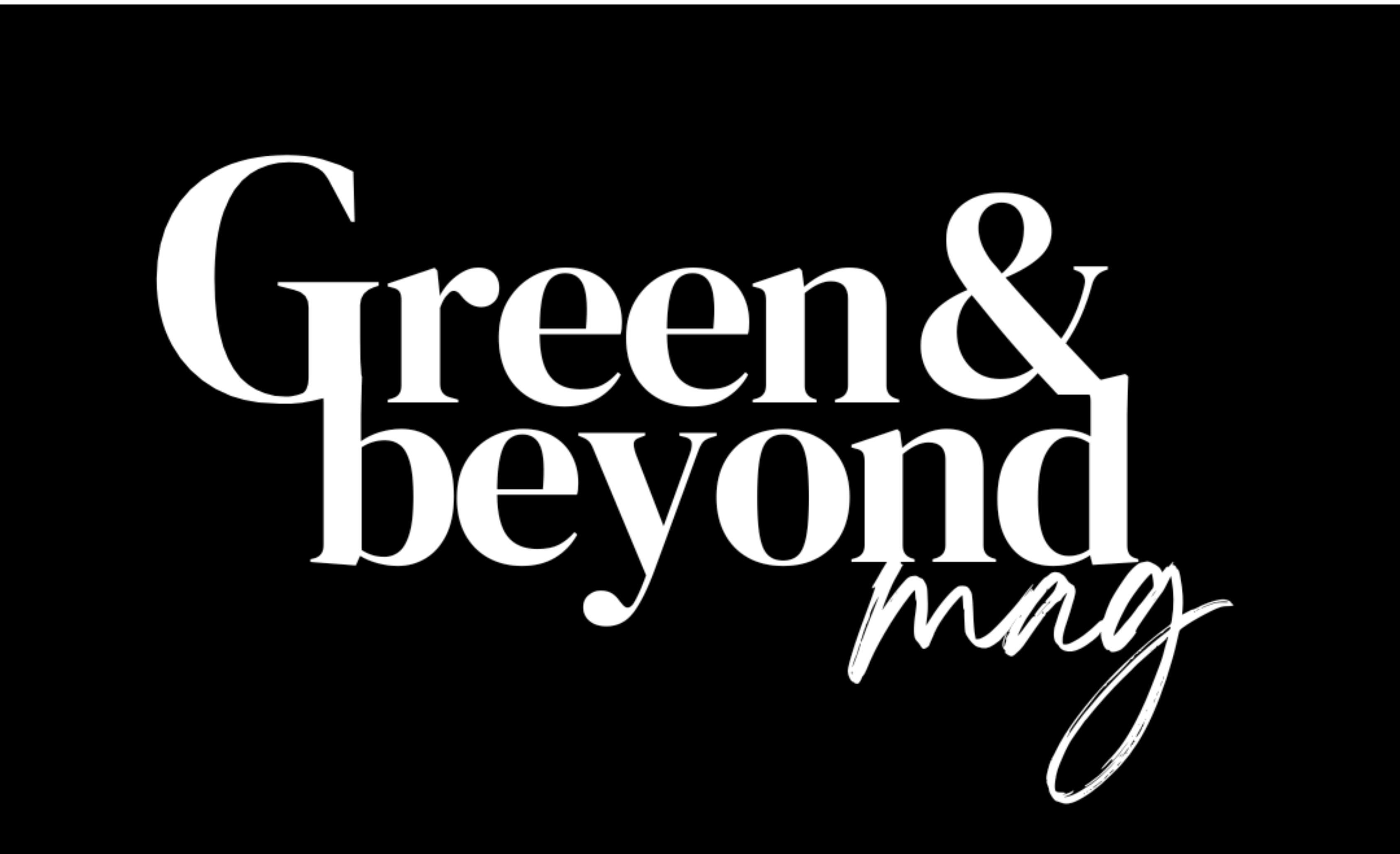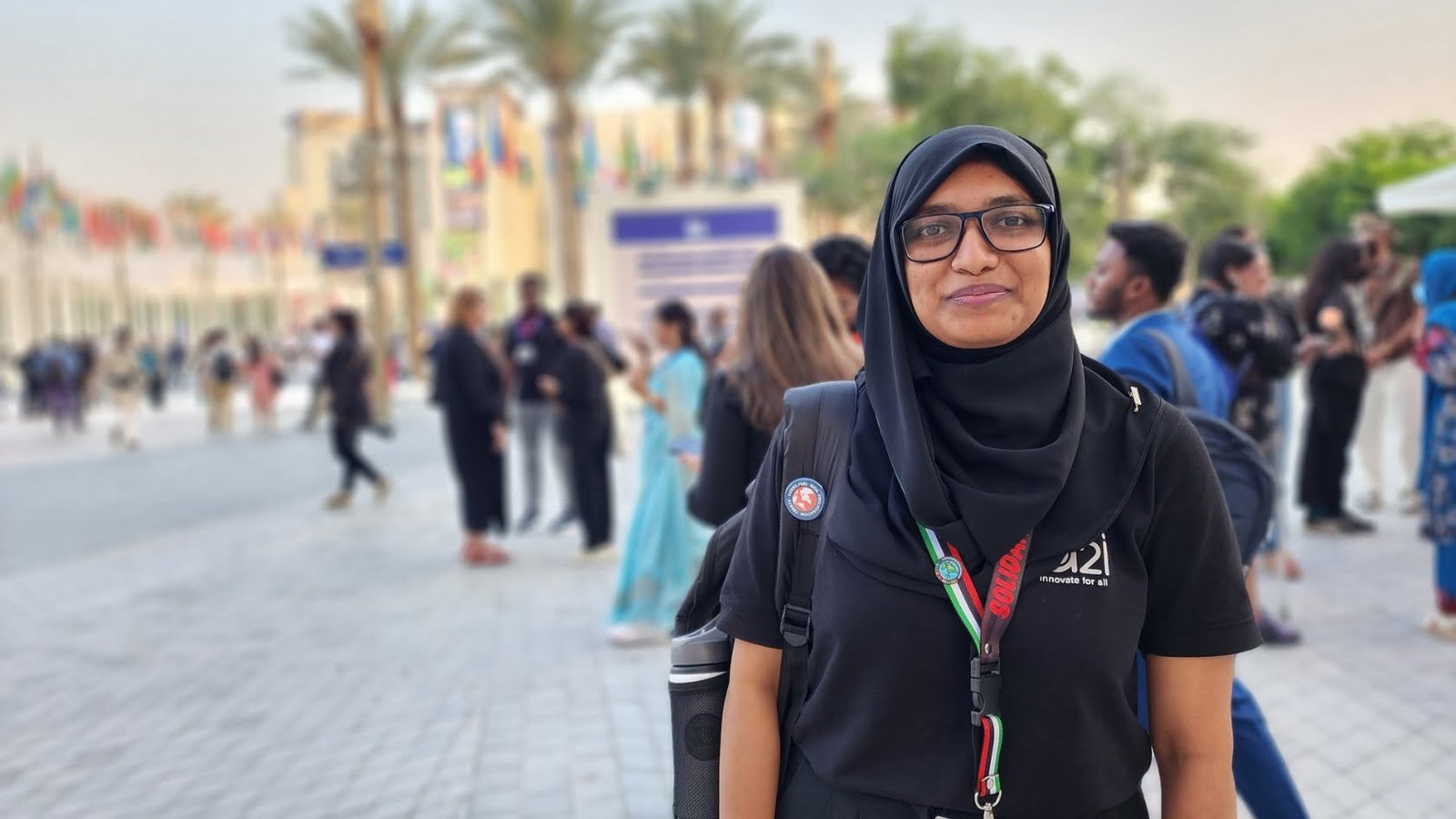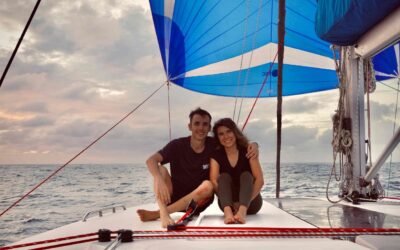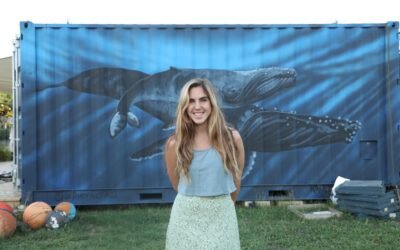Farzana Faruk Jhumu, a passionate Climate Activist hailing from Bangladesh, embodies a remarkable journey of resilience, determination, and unwavering commitment to environmental advocacy. Her foray into climate activism traces back to a pivotal moment in 2018, sparked by a conversation among friends about societal impact and the privilege of making a difference. This catalyzed the inception of “Kaath Pencil,” a heartwarming initiative aimed at spreading joy and knowledge among underprivileged children through educational endeavors. Farzana’s narrative intertwines personal growth with a profound awakening to the urgency of climate action, fueled by encounters with communities bearing the enduring scars of environmental crises like Cyclone Sidr in 2007.
Farzana’s evolution as a climate advocate unfolds against the backdrop of grassroots engagement and global collaborations, notably with initiatives like Fridays for Future MAPA and the Fossil Fuel Non-Proliferation Treaty. Her experiences at COP events, from COP26 to COP28, have honed her insights into the intricacies of climate policy and the imperative for decisive action. Through her role as a UNICEF Youth Advocate, Farzana champions youth empowerment, policy advocacy, and community resilience, embodying a vision of inclusive, impactful climate activism.

This interview delves into Jhumu’s remarkable journey, exploring her motivations, the challenges she faces, and the unwavering optimism that keeps her going. It’s a story that will inspire you to take action, no matter how small, and join the fight for a more sustainable future for all.
Can you please share a bit about your journey? How did you get involved in climate activism?
My climate activism journey started in 2018 when some of my younger brother’s friends and a few other friends were randomly discussing how privileged we were and that we should try to do something for society. I was completely on board, so later, we started a group called ‘Kaathpencil’ – our whole idea was ‘to make people happy.’ As we started KaathPencil, we began going to various schools for underprivileged children to provide them with free books. Then, around 6-7 months before COVID hit us, we started a school for children living in slums close to where I live. The school ran smoothly for 3-4 months, but sadly, we had to shut it down when COVID-19 happened.
While I was working on this project, connecting with the children, and figuring out what to teach them beyond the alphabet, I had also been educating myself on the climate crisis. This was especially true after hearing Greta Thunberg’s moving speech in 2018. I remember all those climate strikes and how climate change had become a central topic of discussion. While I was exploring and educating myself, there was one particular case I’ll always remember – a family that lost everything due to Cyclone Sidr in 2007 and had been living in this slum ever since.

It was a long time ago, and I was very young at the time, so while I don’t have a lot of deep knowledge about Sidr, I still remember the massive electricity crisis that affected the whole of Bangladesh. We had no electricity in Dhaka for almost a couple of days. When the electricity came back, we only had one TV channel, BTV (Bangladesh Television), so I remember how glued we were to the TV, just listening to the news and wondering what was next. This experience left a significant impact on me.
While I never had to worry about that growing up, when I started talking to these families, specifically this family, it struck me how it had been over 12 years since Sidr and they were still suffering the consequences, even though so much money was raised for relief efforts. Later, I learned about Fridays for Future (FFF) and found out they had a chapter in Bangladesh through social media. I joined them, and upon joining, they asked if I could help maintain communication with the international community, to which I happily agreed.

As I engaged with FFF’s larger chapter, I realized how different and vast their thought process was – they had a lot of knowledge about climate change and all the policies surrounding it. As FFF was growing around that time, we had many discussions on fundamental ideas, and I joined every single call. Being very new, I sometimes didn’t understand a lot of things in the beginning, but I participated anyway – I wanted to learn more and play a role.
Later, by the end of 2019, Fridays for Future started building its ‘Most Affected People and Areas’ (MAPA) chapter. The whole idea was to create a safe space for those in the Global South to discuss how climate change relates to them and how they could come to the forefront of the movement – it was more like a brainstorming session. So, that’s where we started.

And when Fridays for Future (MAPA) started, as Bangladesh is a vulnerable country, I got the opportunity to engage more. Coincidentally, COVID also hit at the same time. Throughout this entire consistent period, I tried to join every call possible, every meeting possible, reading every document they shared on how they relate with different campaigns, banks, finance, and economy. I tried to read and learn everything through that chat through Fridays for Future. Most of the time in Bangladesh, my responsibility was to communicate the information that was coming from there more to my community. However, Bangladesh was more focused on strikes, volunteerism, and action-based movements. That’s why Bangladesh gave me information on strike goals, agendas, and how to organize strikes. But at the same time, my knowledge was growing. Then in 2021, UNICEF International, reached out to MAPA saying they had a children’s climate risk index and wanted to publish a report with a forward. They needed some activists to write the forward and offer support, and they helped us write it. The four of us writing were Greta Thunberg, myself, Eric Njuguna, and Adriana Calderón. So UNICEF widely publicized it, and all the big news media covered it. After that, while still being a related member, I was volunteering in almost every group possible and every working thing possible. That’s why Fridays for Future, especially the MAPA chapter, became known – Farzana from Bangladesh was doing the work. When that thing started getting highlighted, UNICEF Bangladesh got to know that I existed.

In 2021, we took a delegation from Fridays for Future – MAPA. Every delegation to COP was a huge task in 2020, so two years later, there was a huge push for youth engagement, and for the first time ever, Fridays for Future participated as a delegation. It was huge, and I was part of that team. We discussed how to reach out to the news media. That’s how I got more involved in international processes like UN processes.
At the same time, kind of funny, when we were supposed to go to Sweden for a four to five-day training program with UNICEF Sweden to learn more about what was going on, we ended up in London for a campaign against Standard Chartered Bank. It was a cleanup campaign because Standard Chartered Bank is a UK-based bank, but they are funding fossil fuels in 12 countries in Asia, and funnily enough, they were one of the best banks in Bangladesh. So they were earning our money, getting our money, and funding fossil fuels. Based on that idea, we did a campaign. But then my visa to Sweden was rejected because, fun fact: they told me that as a young woman who is unemployed, unmarried, and has no children, they think I will not return to Bangladesh if I got my visa. Feeling helpless, I posted it on Twitter, and luckily famous personalities like Greta, Vanessa, and others noticed it and started retweeting it. UNICEF saw it and claimed that I was working with them and that they were sending me. As UNICEF was also working with Sweden, they confirmed that I was going there for them. So, although I initially had to go to Sweden, UNICEF now knew me.
I came back, and UNICEF reached out to me again. They said they wanted to work with me and offered a new youth advocate position. It’s a voluntary position, but they would support me in different areas. I had always been passionate about UNICEF since my childhood from watching the Meena Cartoon, so I was very happy and said yes. That’s how I got involved with UNICEF and then with many other UN processes.

You’ve been actively involved in international initiatives like Fridays for Future MAPA and the Fossil Fuel Non-Proliferation Treaty. How do you see these collaborations contributing to global climate action?
Fridays for Future is a movement with a goal to amplify the voices of frontline communities, their ideas, and ensure intersectional justice through climate justice. The Fossil Fuel Non-Proliferation Treaty is an initiative that pushes for a treaty to phase out fossil fuels. These are just a few examples, and I work with many other organizations like 350.org that are all involved in climate action.
Here’s how I see collaboration: Global climate action is a complex idea. Policymakers create policies, but national circumstances are also very important. MAPA, a grassroots movement, focuses on getting that grassroots work done.
When we talk about climate action, it’s crucial to understand that it’s a process. Initiatives like the Fossil Fuel Non-Proliferation Treaty, MAPA, or any others I work with all emphasize the importance of action. For example, in Bangladesh, ‘goat rearing’ was a form of climate adaptation effort for many many days, but without addressing the root cause of climate change, adaptation alone won’t be enough.
The same principle applies across the board. MAPA, the Fossil Fuel Non-Proliferation Treaty, or any other organization – the main thing is to make sure we understand the bigger picture. We need to know that if fossil fuels aren’t phased out, no matter how much adaptation or resilience we build, or how much we discuss loss and damage, nothing will truly work.
Similarly, if we don’t explore the connections between climate justice and issues like child rights and women’s rights, and if we don’t elevate the voices of the Global South, no matter how many initiatives we have, they won’t serve the communities most affected by climate change. Those who contribute the least to the problem are often the ones who suffer the most.
Initiatives like the Fossil Fuel Non-Proliferation Treaty address this with its three pillars: phasing out fossil fuels, ensuring a just transition for workers in the industry, and involving all stakeholders in the decision-making process.
You have participated in three COPs so far, from COP26 to COP28. What have you learned from these three events, and what do you think the next COP29 needs to deliver, from your experienced point of view?
My COP journeys have evolved significantly. At the first COP I attended, the focus was on advocating for more youth inclusion and discussions around climate change’s impact on frontline communities and the most affected people and areas. COP26 was more about following trends, media narratives, and learning how to communicate with a broad audience. Attending side events became a priority to gain a deeper understanding of the COP process itself.
COP27 and COP28, however, were more policy-focused, which aligns with COP’s core purpose. However, a key takeaway across all these COPs is the lack of public awareness about them. It’s become clear that we, the public, have more influence than we might realize. Unfortunately, powerful lobbies and the prevalence of capitalist mindsets make it difficult to have productive discussions. Trust in the process is waning because we haven’t seen enough bold decisions emerge.
Overall, I’ve learned the immense importance of COP policies. They’re not just events, but platforms for crucial decisions that ultimately impact local communities. It’s a two-way process, but COP doesn’t always reflect this. Every word, sentence, and contribution holds significant weight. The political nature of the climate space is undeniable.

COP29 must deliver more concrete language on fossil fuel phase-out, and just as importantly, the financing required for that phase-out. Without these discussions, achieving the 1.5-degree target is simply impossible. My views, and those of the organizations I work with, are clear: we can’t address climate change without tackling both justice and financing issues. This year, COP29 will be heavily focused on finance, which is a positive step. However, it needs to deliver more concrete results.
The most critical issue for this year’s COP29 is undoubtedly the $100 billion pledge for climate finance. Developed nations committed to providing this amount annually to the most vulnerable countries starting in 2020. However, they haven’t met that goal. This year will bring a report detailing the amount delivered, by whom, and when. With this information, we can move forward and discuss a New Collective Quantified Goal (NCG) for future climate finance.
As a youth advocate for UNICEF Bangladesh, what campaigns or initiatives are you particularly excited about, and how do you see youth driving change in climate action?
As a UNICEF Bangladesh Youth Advocate, my role is twofold. One aspect involves policy pushing, lobbying, and advocating for climate justice and children’s rights. The other involves supporting initiatives and campaigns. UNICEF focuses on child rights and youth inclusion, but overall, as a youth advocate, I work in my field on campaigns and initiatives that I’m passionate about.
The campaign initiative I’m most excited about is capacity building. It’s not a one-day event; it’s an ongoing process to raise awareness and equip people with the knowledge to take action on climate change. I’m incredibly proud of the people working on the ground level who make my policy advocacy work possible. I appreciate and support every initiative people take at the local level. I see change coming through climate action, which has evolved beyond just strikes. People are taking innovative initiatives like vertical windmills – these are the kind of ideas I support.
Capacity building, in this sense, is a continuous process of teaching people how to take action. This action can be individual, local, national, or even involve policy, negotiation, innovation, or environmental research. Every change, big or small, contributes to progress. As a youth advocate, I deeply appreciate seeing people take action. We need to spread awareness about green jobs and how young people are using AI for climate action. These are all campaigns and initiatives I support, with a special interest in policy.
I want more people to understand policies and how to follow them. I don’t expect everyone to be an expert, but I want people to know that climate action isn’t just about planting trees.
Could you please share the story behind KaathPencil and its impact on underprivileged children, particularly in terms of climate education?
Initially, the KaathPencil campaign focused on basic climate education. When COVID hit and offline work became difficult, we launched the ‘Poribesher Proti Projonmo’ (PPP) (meaning ‘Generation for Environment’) campaign. The idea was to share knowledge through simple quizzes to reach our target audience. These quizzes weren’t just about finding the right answer; we used them as a springboard to explain the importance and connections behind climate issues. Then, we launched the ‘Act Now’ campaign, which covered climate change, child rights, and child abuse. We reached out to schools to educate students on these basic topics. We didn’t want to replace teachers, but rather to help students expand their knowledge and develop critical thinking skills. Our goal was to empower them to educate themselves.
The ‘Act Now’ campaign reached a significant number of students last year (around 48 schools in 2023). We’re planning another, more comprehensive campaign around climate change for this year (2024).
Sailing on the “Rainbow Warrior” of Greenpeace must have been incredible. What were the most impactful moments for you during that experience?
I could talk all day about how amazing the journey was! Our goal was to get more youth involved and create a more youth-friendly space within the activist movement. It was performative activism, which is different from my policy work, but that’s natural for activism, and I loved it. The Rainbow Warrior is a symbol of hope, and we wanted to show that young people can contribute in different ways, not just through flying or traditional means. Sailing was significant because it connected to the reality of our sinking island nations.

Everyone took the experience incredibly well. There was a huge strike happening in Glasgow at the same time, and we had volunteers and activists from various places joining us, making our movement feel bigger and stronger. That was a powerful message in itself. It’s hard to pick just one impactful moment, but if I had to, it would be a situation that wasn’t directly related to climate change.
The ship’s captain, a woman, faced resistance from the police who tried to stop the ship from passing under a bridge, claiming it was illegal. We were all on board at night, and the entire ship was wired with microphones, so everyone could hear the exchange. The captain was determined to take the ship under the bridge, even though the police warned it could damage the bridge.
The captain’s courage was inspiring. The Greenpeace crew assured her they would handle any potential damage, but she emphasized her responsibility to give hope to people who were watching. She took a calculated risk, and after successfully passing under the bridge (which was full of journalists covering the event), she explained her actions. She knew her job was to give hope, and she wouldn’t shy away from taking risks to do so. The fact that a woman captain took such a strong stance was incredibly impactful.
This experience connects to the work I do. I need to give people hope and maintain my own. Even when people don’t see the results of my work all the time, I know what I’m doing and why it’s important. That’s why I take calculated steps and risks, just like the captain. There are many challenges ahead, but sailing on the Rainbow Warrior showed the power of collective action, inspired me, and solidified my purpose.
Given the challenges we face, how do you maintain a sense of climate optimism? What advice do you have for others looking to stay hopeful and engaged in the fight against climate change?
For me, hope comes from the community I work with. The climate community is small, but we take care of each other. It’s not just about climate action; it’s about a broader movement for social justice, elections, women’s rights, and children’s rights. This sense of community is crucial because the movement itself can feel capitalist and broken. We face internal and external problems, so having good people to work with is essential.
The second source of my optimism is Bangladesh’s local communities. Bangladesh is a champion of climate adaptation because they have to be. People in the countryside and coastal areas have very little, and they are finding solutions. They inspire me because I have the privilege of things like food, water, and a house. This responsibility motivates me to work for them, as they can’t be activists or policymakers.
If you read stories or visit these communities, you see they don’t lose hope when they have to migrate. They are sad and feel the unfairness, but they remain hopeful. This is fuel for the entire youth movement, not just me. It’s also important to be aware of the many people working on solutions; that knowledge is supportive.
What’s your favorite local food? Does climate change have any impact on it?
I don’t have a specific favorite, but I enjoy Fuchka and Pitha. Climate change likely has a bigger impact on our cultural connection to seasonal foods. Pitha is traditionally eaten during winter, but with climate shifts, we’re losing this seasonal aspect. It’s not a direct impact on the food itself, but on the cultural practices surrounding it.


Tell me about a practice(s) in your culture that’s actually very sustainable and good for the planet.
There are SO MANY things! In Bangladeshi culture, we don’t believe in throwing things away. We use clothes until they’re unusable. This anti-consumerist approach focuses on getting the most out of what we already have. Even when considering eco-friendly options, reusing and repairing what we have is important because making anything requires resources.
Another sustainable practice is our local cuisine. We eat local and seasonal foods throughout the year, which minimizes waste and transportation needs. This approach reflects a long history of living in harmony with nature.

What would your advice be to someone in the climate movement who feels hopeless and burned out?
I understand burnout – I experience it too. My advice is to know your capacity and who you’re working with. Don’t try to do everything, especially as a Bangladeshi youth. There’s pressure to be involved at every level, but every action counts.
Climate activism can take many forms. You don’t have to be a public figure. Identify your skills and how you can contribute. Whether you’re a doctor offering sustainable food suggestions or an engineer working on renewable energy, your individual actions matter. Start learning, value the people around you, and focus on your specific contribution.
How do you envision your future?
I want to work on policy and potentially be part of the UN system. I see myself representing Bangladesh and working with UN agencies or even government agencies on policies related to climate change and energy security. I’m also pursuing a Master’s degree in energy security and policy to further prepare myself for this path.
Do you have an idol?
Yes, I have several! One is BTS. Their UN speech about inclusion and self-love resonated with me, especially for those feeling hopeless. They support the climate movement and youth issues, and their songs address mental health and social issues. Their lyrics are intelligent and deep, which I appreciate. Their music also helps me when I’m feeling burned out.

Another idol is Amina J. Mohammed, the UN Deputy Secretary-General. She’s my inspiration – I see myself in a similar position someday. Seeing her navigate complex situations and lead the UN is impressive. She’s a role model for ambitious women.
What do you do for fun? Any hobbies or passions?
For fun, I listen to a lot of music. I don’t have any specific hobbies, but I enjoy trying new things. I love the experience of exploring and doing different activities. Traveling falls into this category – I don’t get to do it often, but I love it when I can.
If I had to define a passion, I’d say it’s observing people. I do this with great interest. I try to understand them and see things from their perspective. I also enjoy talking to friends and meeting new people.
What’s your mantra for life?
It might sound a bit cliché, but it’s something I came up with when I started climate activism: “I don’t want to die because that’s the only thing I can do. I want to die because that’s the last thing I can do.” The idea is not to die in vain, but to make my life’s journey meaningful. Additionally, I follow the saying, “If you are the smartest person in the room, you are in the wrong room.” I don’t want to be the best in any space; that limits my opportunities to learn. I stay connected to climate activism but also explore other areas to broaden my knowledge.
How can others join you in the climate movement?
That’s a fantastic question! The most important thing to remember is that anyone and everyone can join the climate movement and still be sustainable in their own spaces. This includes engineers, doctors, researchers – anyone. However, the climate movement we’re leading is specifically for those who want to focus their efforts on climate change. Fridays for Future is one example, and 350.org has a huge network within their organization. Women also have their own climate movement. Finding out what someone’s interests are is the key to finding the best way to get involved. Everyone has their own way of joining.
If someone’s interested in climate policy, they can join the Youth Constituency for the UNFCCC (YOUNGO). If they’re interested in following environmental policy, they can join the UN Major Group for Children and Youth. If they want to join Fridays for Future, they can find them on social media – every movement has a social media presence these days. If someone wants to learn about capacity building, they can join their local organization through social media. It’s very easy to find them. Joining a bigger movement is also an option. Fridays for Future has its own website, with details for every country. You can simply search for them.
So, joining the movement is very easy. But even if you’re not technically a member, you can still be part of the climate movement by taking action in your own space. This includes everyone – students, doctors, engineers, policymakers, lawyers, journalists – everyone!
Click to connect with and find out more about Farzana Faruk Jhumu.
This is part of a series where Green & Beyond Mag explores the stories and takes a peek at the lifestyles of incredible people like green entrepreneurs, innovators, climate advocates, activists, community leaders, and content creators, all around the world, who love the planet and are working tirelessly to make the world a better place.







